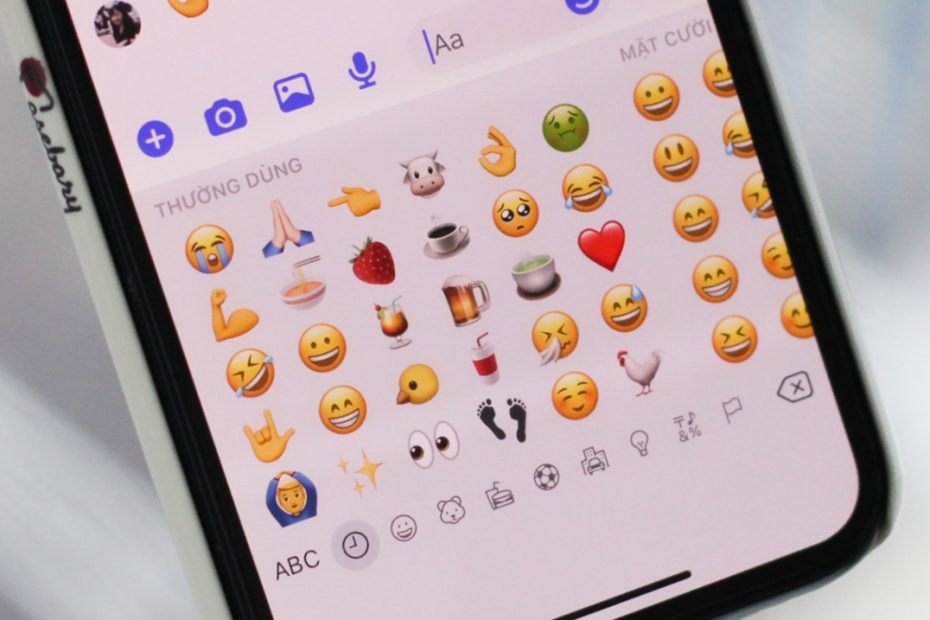“Smiling Face, Smiling Face” dominates online communication
When sending a message, Ngoc Minh (HCMC) always adds an emoji because “a chat without emoji is as boring as a bowl of pho without spices”.
Joining the conversation without emoticons (emoticons or stickers) Min always feels unnatural, tense, thinks the other person is distant or not interested in the conversation.
Similarly, Hoang Quyen and her boyfriend used to use emoticons instead of texting for a long time. “Sometimes there are things that are difficult for you to express, but sending an emoticon with a smile or a tear can change the words you want to say,” Quinn said. In her opinion, the selection of emoticons also stimulates the imagination, such as B. Playing a game instead of just texting and making sure you and your conversation partner understand each other.
“Emoji-only messaging is also a form of end-to-end encryption that helps protect private content,” Kuen explained.

Many people have a habit of sending emoticons instead of text messages.
Cases like Ngoc and Quyen are very common. Results of a survey released July 17 by Duolingo and Slack show that 57% of global respondents believe a message is “incomplete” without emoji. 67% feel more connected and involved in a conversation when texting someone who understands the emoji being used.
In the US, an average of 7 in 10 respondents believe that emojis are an “important” part of conversation. Some young users still believe that if there is no emoticon in the conversation, the sender of the message may not be happy. Without color, the atmosphere of the conversation becomes tense. 55% said using emotion helps them communicate faster in the workplace.
follow up NannyEmoticons are simply visual symbols used to convey emotion in electronic messages and websites. Emojis were first introduced by Japanese communications company Docomo in the late 1990s.
Since their inception, emoticons have been used by users around the world to complement chat content. Recently, however, many young people have become “addicted” to emotions, replacing traditional spoken phrases.
“Tonight your boss sent a text message, the whole team had to work overtime. You can’t refuse, but you can’t accept. What do you write so that the boss understands your feelings? There are situations where words can do it.” But solving the problem is easy with emoticons. You can send a crying and smiling emoji or an icon with two tear lines. Even the ‘Like’ button says more than chat lines,” explained Bao Dat, a staffer at the Ho Chi Minh Office, an emoji attraction.
According to Dats, emojis are always filled with group chats with friends, co-workers, and family. “My parents like to use emoticons to communicate. Sometimes people still feel ‘something is missing’ when there are no smileys in the conversation,” Dats said.
“People use emoticons as a language system for communication. They can convey subtle emotions in many contexts, especially online. But like any language, using emoticons can sometimes be confusing and even counterproductive,” said Hope Wilson. Director of Education at Duolingo. Another network.
Xuan Tu, manager of the grocery store, said, “Emojis are great, but sometimes they annoy a lot of people. Sometimes I post an ad and wait for comments, but people just like emoticons or leave emoticons. Everything is over. If it should be more detailed, it’s quiet with icons
Many people have said that when someone ends a conversation with an emoji instead of a greeting, they feel disrespected. Another problem is misunderstanding the meaning of the symbol. The most common is “Smiley :-)”. According to a poll conducted by Slack and Duolingo, 38% of respondents believe this emoji is used to express happiness, while 39% believe it is used to express a “generally positive” feeling. However, 14% said the emoji expressed “disappointment.” “,” Trust Others believe that this sign portends coldness or humor.
The abuse of emojis has gotten many people into legal trouble. The sixth voice According to a court report released in China’s Jiangsu province, the country’s judiciary has accepted 158 cases in which emojis were used as evidence over the past five years. The trend of recognizing modern methods of communication such as emoticons or stickers, memes … has increased from 8 in 2018. Up to 61 cases by 2021
The wave of conflicting opinions in the community was caused by the court’s acceptance of emoticons in court. Some fear the visual images they use could be reinterpreted and become “convincing evidence” in the future. One user asked, “Can I be punished for violence if I use a fist or hammer emoji?”
Kung Nha
